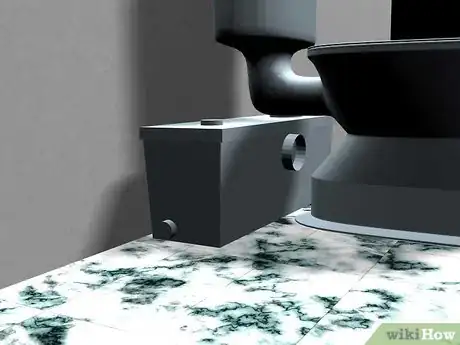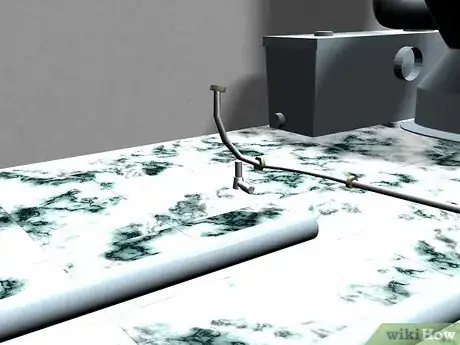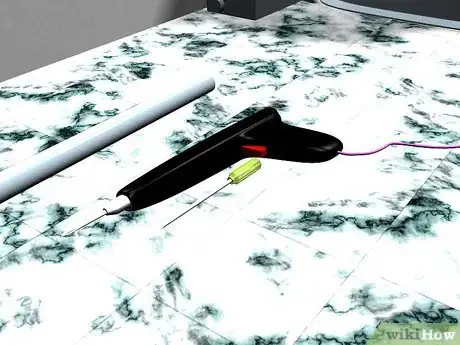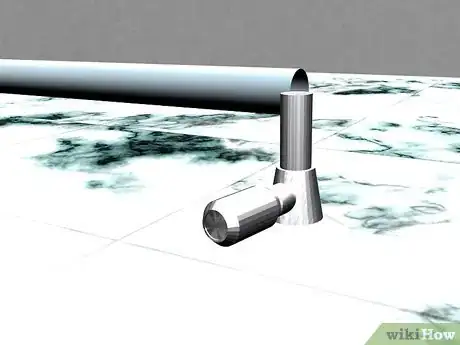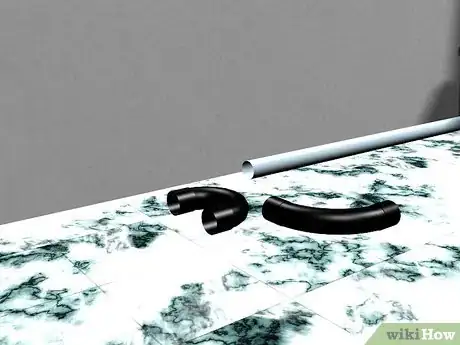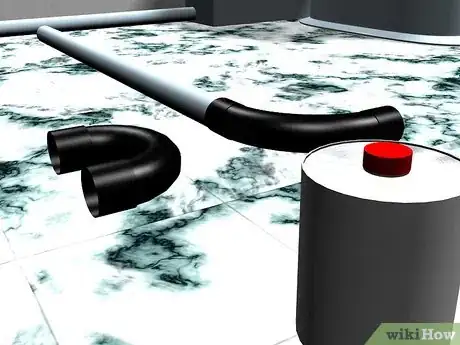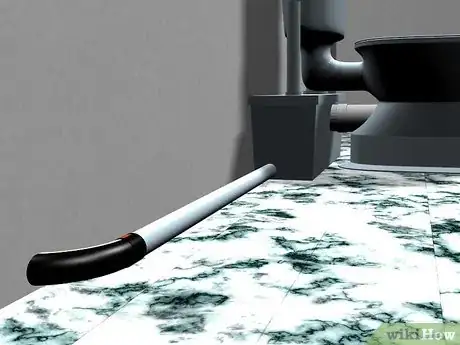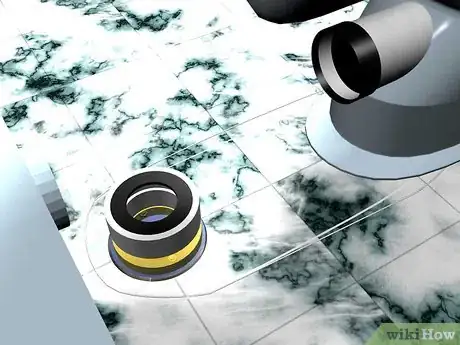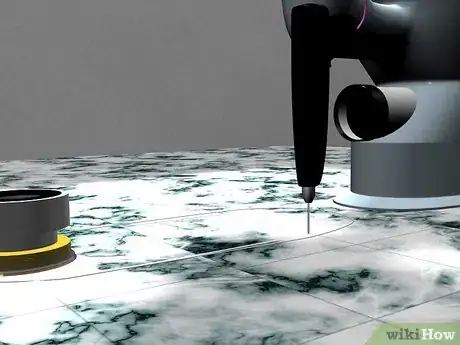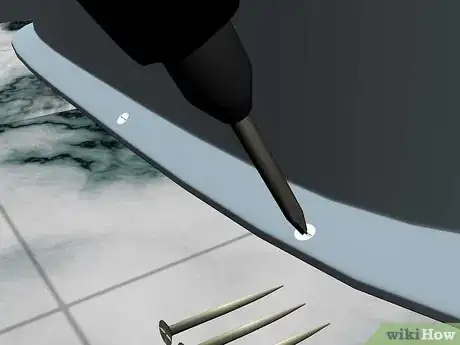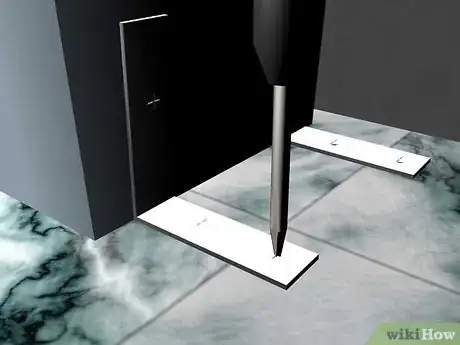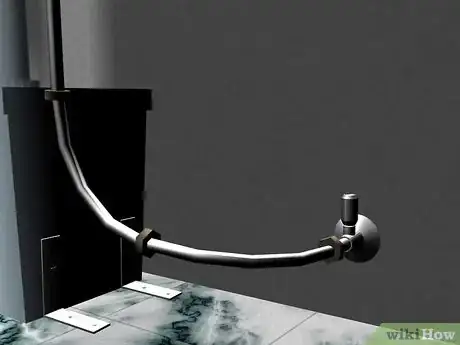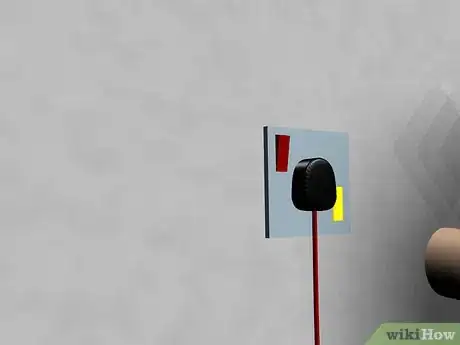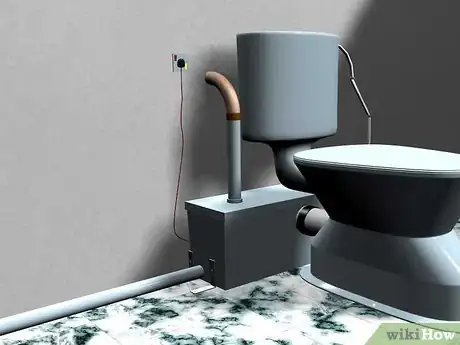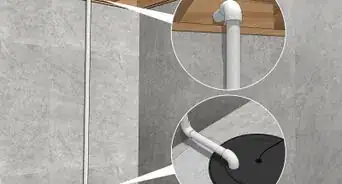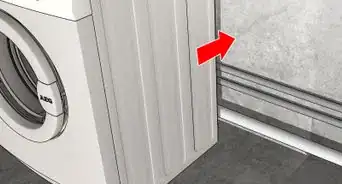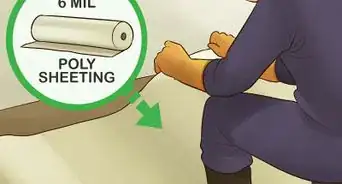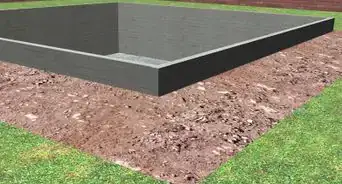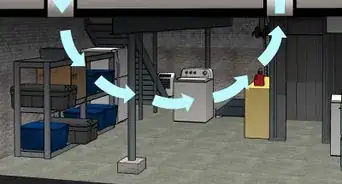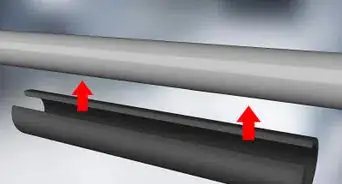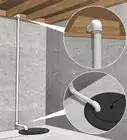wikiHow is a “wiki,” similar to Wikipedia, which means that many of our articles are co-written by multiple authors. To create this article, 12 people, some anonymous, worked to edit and improve it over time.
This article has been viewed 50,351 times.
Learn more...
To have a toilet in a basement, a macerating toilet can be used. This kind of toilet connects to a macerator unit behind it, which pumps waste through a 3/4-inch (1.9 cm) discharge pipe after grinding it up with stainless steel blades. The macerating unit should be installed in the basement first since the unit goes behind the toilet and connects to piping that sends waste up to and through a house's main plumbing system. Try following these steps to install a basement toilet.
Steps
-
1Place the macerator unit so it will be behind the toilet's location. The unit will connect to the back of the macerating toilet.[1]
-
2Connect a discharge pipe to the macerator's drainpipe. The discharge pipe can feed into a piping system and connect with the house's main drainage system to get rid of waste.
- Fit the macerator unit manufacturer's discharge adapter onto the discharge pipe and the macerator's outlet port to connect them. The port is on top of the macerator unit.
- Tighten the discharge adapter with the nut driver so it is secure.
- A gate valve is recommended on the discharge line near the macerator's outlet. This will come in handy if the macerator needs to be serviced. Without the macerator in place there won't be anything to hold the waste in the vertical run of the discharge line.
Advertisement -
3Connect the macerator unit to an existing vent stack inside the house with PVC vent piping. This provides necessary ventilation.[2]
- You may need to apply PVC pipe primer and cement before fitting the PVC piping to the vent stack and macerator unit.
- A new vent line may be ran if an existing vent stack is inaccessible.
-
4Place the toilet in its desired position in the basement. Mark the mounting holes for the toilet on the floor.[3]
-
5Move the toilet away. Drill pilot holes into the basement floor.
-
6Use 2 brass screws to secure the toilet in place over the holes.
-
7Connect the macerator unit to the back of the toilet. An accordion-like gasket may work as a connector. Secure the connection with a stainless steel clamp tightened with the nut driver.
-
8Connect the basement toilet with the water-supply line. Open the water shut-off valve.[4]
-
9Plug the unit into a GFCI outlet. (Ground Fault Circuit Interrupter)
-
10Flush the toilet. Check for any leaks.
Warnings
- Check with your local building code enforcement authorities to see if you can install a particular kind of toilet or plumbing system you are considering.⧼thumbs_response⧽
- A macerating toilet may be required for basement plumbing in your area.⧼thumbs_response⧽
- If using a sewage basin system in a basement, moisture problems can occur in homes with a high water table due to an underground hole required for holding a waste storage tank.⧼thumbs_response⧽
Things You'll Need
- Macerating toilet
- Macerator unit
- Discharge pipe
- Discharge adapter
- Nut driver
- PVC vent pipe and fittings
- PVC pipe primer
- PVC pipe cement
- Drill/driver
- Drill and driver bits
- Brass screws
- Stainless steel hose clamp
References
- ↑ https://www.bobvila.com/articles/429-adding-a-basement-bathroom/
- ↑ https://www.bhg.com/home-improvement/plumbing/how-to-install-an-upflush-toilet/
- ↑ https://www.youtube.com/watch?v=uZKIP-AZRMo
- ↑ https://www.bhg.com/home-improvement/plumbing/how-to-install-an-upflush-toilet/
- http://www.thisoldhouse.com/toh/video/0,,20332410,00.html
- http://www.nytimes.com/2005/08/21/realestate/21home.html
